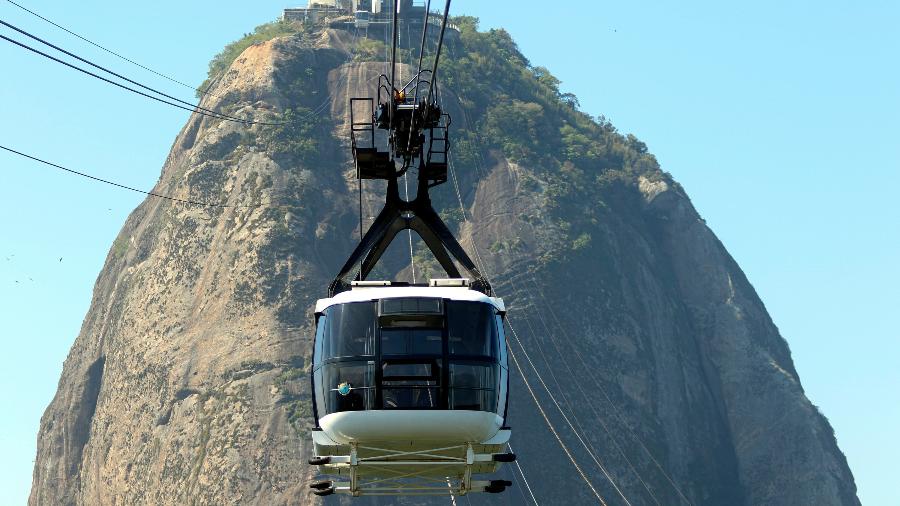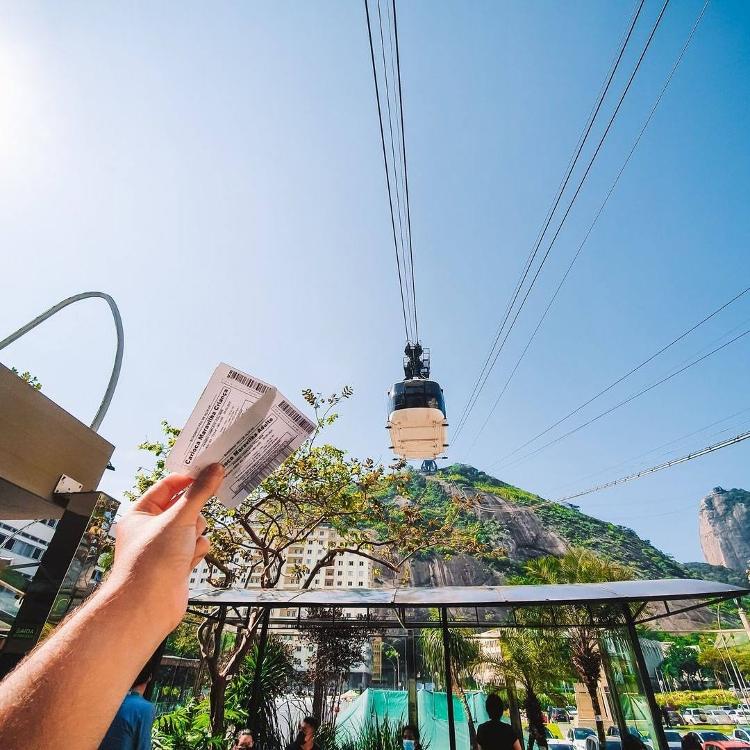Sliding down a 755-meter cable at speeds of up to 100 km/h between Sugarloaf Mountain and Morro da Urca, in the southern zone of Rio de Janeiro, could attract adrenaline lovers to one of the planet’s most iconic landscapes.
Not if it was up to Gricel Osorio Hor-Meyll.
This psychologist joined dozens of demonstrators in a protest against the project, which is still under construction and which they consider will damage environmental conservation and the image of the “Marvelous City.”

“It is not correct, and it harms the city,” Gricel told AFP, “because it will mischaracterize” this mountain and sea landscape, which was declared a Unesco World Heritage Site in 2012, along with other Carioca symbols such as Christ the Redeemer on Corcovado hill.
The company in charge of the project, Parque Bondinho, claims that the experience will be unique and environmentally sustainable.
For the second half of the year, the attraction will invite visitors to go down four zip lines connecting the Sugar Loaf mountain, 396 meters above sea level, and the neighboring Morro da Urca, 220 meters.
The distance between the two is 755 meters, and the maximum speed is 100 km/h.

The protesters complain that the new cables will affect the landscape of Rio’s postcard and indicate possible effects on the local flora and fauna, already affected, they say, by tourist helicopter flights and night parties.
They also lament the drilling of holes – made to support the cables – in the rocks of these national monuments protected by the Institute for National Historical and Artistic Heritage (Iphan).
“It’s not just a rock; it has life,” says Gricel, who left mountaineering fifteen years ago and is currently a member of the NGO Ecological Action Group and the Sugarloaf without Tyrolean Movement.

Parque Bondinho has been running the “bondinho” (cable car) that connects the two hills, one of the most beautiful landscapes in Rio de Janeiro, for over a century.
According to the company, the visual impact will be limited because the cables of the zip lines are thinner than those of the cable car and vibrate less.
It also stated that it obtained all the necessary permissions after consulting with civil associations and meeting the authorities’ requirements.
NIGHTCLUB ON THE MOUNTAIN
Gathered at the base of the hill, protesters held up placards that read “SOS Unesco” and “Out zip-lines.”
An internet petition to stop construction has more than 11,000 signatures.
The protesters denounced the absence of a broad discussion. However, they stated that “zip lines are the tip of a gigantic iceberg”, according to a statement from the group.

They also pointed to an even larger project under evaluation by the authorities, which includes other attractions, stores, a performance hall, and a nightclub on top of the two mountains, which receive 1.6 million visitors a year.
“It’s a hideous, hideous, hideous thing. It takes away the top of the mountain,” said Regina Costa de Paula, a 67-year-old artist.

For Hans Rauschmayer, a 57-year-old German businessman who lives in the city, the company “uses Sugarloaf Mountain as if it were its property.”

